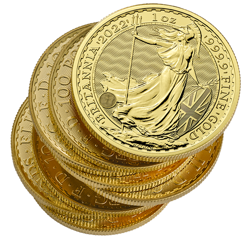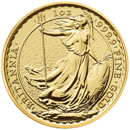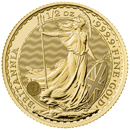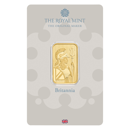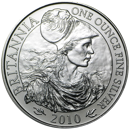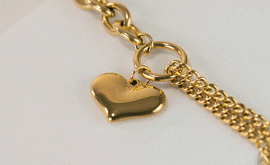Who or What is Britannia?
The history of Britannia
The name ‘Britannia’ comes from the Latin name given to the British Isles by the Romans. This was derived from the fourth century BC Greek explorer Pytheas’ name for the islands "Prettanike" or "Brettaniai". Later, in the first century BC, the Greek historian Diodorus Siculus used "Pretannia", based on the native name of the Pretani people, believed by the Greeks to inhabit the British Isles. The Romans adopted the Greek term, referring to the islands as "Insulae Britannicae", which eventually evolved into simply "Britannia".
Although Britain had been conquered by the Romans under the rule of Emperor Julius Caesar, Emperor Claudius was portrayed in Britain as its conqueror and a frieze was completed which showed a female warrior labelled ‘Britannia’ writhing under the heel of the emperor, symbolising a conquered Britain. A more regal looking Britannia was later portrayed on coins under the rule of Hadrian around 122 AD. It was commonplace for the Romans to personify countries as female figures, with other provinces including Africa, Gallia, and Dacia, also personified as women on coins.
As the most distant overseas territory of the Roman Empire, Britain became associated with the Roman goddess of strategic warfare and victory, Minerva. Consequently, Britannia was personified as a goddess-like warrior, looking fairly similar to Minerva with her helmet and shield.
After the fall of the Roman Empire in the early 400s, Britannia’s image vanished from coins for several centuries. However, Britannia reappeared during the reign of Queen Elizabeth I in the 1600s. In a time where England was attempting to enhance its naval dominance, together with the reign of a female monarch, Britannia was reinstated as a symbol of national pride and strength, appearing in literature and contemporary drama.
In 1672, during the reign of Charles II, Britannia was reintroduced onto coins. During this time, Britain’s maritime strength was under threat. It was hoped that the image of Britannia would inspire the nation as she had previously been shown on Roman coins seated amongst the waves, so it was argued that Britannia had claim to the seas surrounding her.
Britannia on British coins
After her initial appearance on Roman British coins almost 2,000 years ago, Britannia has constantly appeared on Britain’s coins since 1672. Early coins showed Britannia holding a spear, however, later coins such as the ‘cartwheel’ penny show her seated on rocks in the sea, exchanging the spear for a trident as she became more associated with the ocean. These coins also depicted Britannia in a more nationalist display than the Roman coins, as she was shown holding a shield bearing the Union flag. Following the Great Recoinage of 1816, she also featured on the Farthing, the Penny, and the Halfpenny. In 1901 a new Britannia was designed for the reverse of the florin, which this time showed Britannia standing with flowing robes on the prow of a ship at sea.
In 1968, the UK was preparing for decimalisation, and it was decided that Britannia would not be appearing on any of the new coins. However, due to public outcry, this decision was soon overturned, and Britannia appeared on the new 1969 circulating fifty-pence coin. The world’s first seven-sided coin, this now famous image was designed by Christopher Ironside and features Britannia seated beside a lion, with her Union flag shield at her side. She holds a trident in her right hand, and an olive branch to symbolise peace in her left hand. Britannia also appeared on a circulating £2 coin in 2015, featuring a modern interpretation of the bust of Britannia designed by Anthony Dufort. One of the rarest £2 coins struck for circulation, this coin is often sought after by collectors.
In 1987, as Britain required a one-ounce British gold bullion coin to compete with the South African Krugerrand and USA Eagle, Britannia was hoisted into the spotlight as The Royal Mint issued the gold Britannia coin. Containing one ounce of fine gold, these annually released coins quickly became a bestseller for The Royal Mint, and one of the world’s leading bullion coins. The coin featured sculptor Philip Nathan’s design showing the heroic figure of Britannia proudly standing by the shore in long flowing robes, as she holds her shield and trident. After the success of the 1oz gold Britannia, The Royal Mint then went on to produce 1/oz, 1/4oz, and 1/10oz coins. Since the advent of the first Britannia coin in 1987, a number of variations of the design have since been released showing Britannia in a range of poses and interpretations. However, Philip Nathan’s now iconic standing Britannia design is the one used most often. A silver Britannia coin was later released in 1997 featuring the same design as the gold.
In 2021, The Royal Mint tweaked the design of the Britannia, adding four modern groundbreaking security features making the Britannia bullion coins one of the most visually secure coins in the world.
A heroic figure reinterpreted by many different artists throughout the centuries, the ancient figure of Britannia has been used in Great Britain for around 2,000 years. However, her constant reinvention and relevance to the nation she represents ensures that she continues to be a feature of the coins we use every day.
The most valuable coins with Britannia
Britannia's portrayal on coins has not only personified the strength and identity of the British nation but has also created some of the most sought-after coins in the world.
Gold Britannias: First introduced in 1987, the gold Britannia coin is available in a range of weights including 1oz, 1/2oz, 1/4oz, and 1/10oz, each adorned with the iconic image of Britannia. Popular with collectors every year, these coins also have the benefit of being exempt from Capital Gains Tax (CGT).
Among collectors, certain years and editions, such as the 2017 30th anniversary coin, the 2023 Coronation Britannia with a limited mintage of only 10,000, or low mintage proof sets, can sometimes command higher prices due to their historical significance and collectability.
Silver Britannias: Like their gold counterpart, silver Britannia coins are always a popular choice among collectors worldwide. Available as a 1oz coin, as well as larger sizes 10oz and 1kg, and fractional sizes 1/4oz and 1/10oz, these coins are also exempt from CGT. Limited edition releases, such as the 2023 Coronation Britannia with a limited mintage of 200,000 worldwide, as well as limited edition proof sets can sometimes fetch higher prices in the market.
Rare editions: Certain editions of Britannia coins can stand out due to their rarity and unique characteristics. Coins with minting errors, low mintage numbers, or special finishes, such as the 2013 Silver Britannia with the Oriental Border or the 2014 Silver Britannia with a Lunar Horse Privy mark, can be sought after by collectors.
Proof sets: Complete sets of proof Britannia coins, especially those packaged in special presentation sets, can sometimes hold higher value in the collector's market. Limited edition sets in excellent condition can be prized by numismatists and collectors.
This blog represents one person’s opinion only. Please note, gold and silver prices may go down as well as up. Atkinsons Bullion & Coins accepts no responsibility for any losses based on information we have provided. We do not offer investment advice. Please carry out your own research before making an investment decision.
